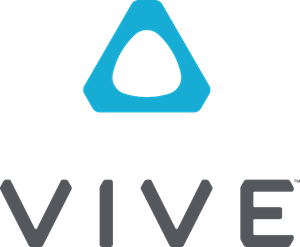Best Virtual Reality Companies
With the global market size of virtual reality (VR) estimated to reach $38 billion by 2029, more and more businesses are looking to incorporate VR into their products and marketing strategies.
Virtual reality companies are now strategically poised to leverage VR in their day-to-day operations while harnessing its immersive experiences and technology to revolutionize development and training and redefine customer experiences.
Recommended Firms

Start your search for the top virtual reality companies at Firms.com!
Your search for the top virtual reality companies begins here! Review our detailed list of virtual reality companies to hire the ideal partner for your business.
Are you a leading virtual reality development studio that should be on our list? Contact us today to get listed.
Top five things to consider when partnering with virtual reality companies
You can transform consumer interaction, training, and business procedures with VR. To fully maximize these endless VR possibilities, you need to find the best VR company to partner with.
Here are five tips to help you pick the right VR business solutions firm.
- Industry experience: A company’s knowledge and expertise in your industry are the cornerstones of a positive partnership. You need a partner who is aware of your particular challenges and capable of anticipating issues and providing creative fixes.
- Customization and scalability: Your partner’s VR solutions should meet your unique needs. They should be able to customize their services to fit your workflow and project specifications, grow with your business, and ensure long-term success.
- Operations for integration: Your VR solution should smoothly integrate with your existing business processes. Your VR partner should be able to link their apps with your software system. You should know beforehand how their solutions might affect your business processes.
- Data privacy and protection: VR apps handle sensitive data, and it is essential that your partner adheres to data privacy and security. They should have robust safety protocols to safeguard your data and abide by data handling norms and laws.
- Maintenance and assistance: You need a partner to provide maintenance and assistance after implementing the project. Choose a partner with competent support staff to handle issues promptly so your VR solutions continue to benefit your company.
FAQs on the best virtual reality companies
-
How do virtual reality companies help businesses?
Over the years, VR technology has improved, and you no longer need a complex computer system and massive budgets to have virtual experiences. VR can now be leveraged to enhance business operations.
Here are five ways you can use VR technology to elevate your business.
1. Enhancing recruiting efforts
VR can improve your recruiting efforts and help you find the best candidates. You can use simulated office visits to give applicants a feel for your company culture, while interactive experiences can help you evaluate applicants’ skills. Using and associating your business with cutting-edge tools can also help you build positive brand associations and improve your recruitment experience for job candidates.
2. Finding fresh marketing avenues
VR technology can be used to engage new audiences and create lasting impressions through immersive brand experiences and interactive product demos. Considering that many consumers still have limited exposure to VR technology, you can create opportunities for your brand to engage with your customers. VR is a powerful promotional tool as it increases customer emotional engagement better than two-dimensional media.
3. Training your employees
You can also leverage VR technology to offer technical and soft skills training. You can achieve this by conducting real-life simulations to train employees to operate given machines or improve their interpersonal skills. You can also use VR to provide large-scale remote training opportunities if you are a large corporation.
4. Improving product design
Designing new products can be laborious and time-consuming. However, VR technology, such as depth perception and interactive environments, can improve product design timelines. VR’s immersive design simulations allow designers to interact with and manipulate digital prototypes and test how customers will use the final product.
5. Improving manufacturing and operations
With VR technology, you can significantly improve your operational efficiencies. The immersive technology of VR allows you to test new processes and analyze complex information and diagrams more efficiently. This makes them much easier to understand, and the parameters can be manipulated in real-time. With VR technology, the need for physical 3D models is reduced, resulting in cost savings.
-
How do you choose the best virtual reality company?
Many businesses lack the expertise and skills to develop and implement VR technologies in-house. For this reason, outsourcing a VR company is the go-to option. However, finding the best partner can be challenging.
Here is a step-by-step guide to outsourcing your VR partner:
Identify your needs and goals
You need to define the intention and purpose of your VR project to understand your VR needs. You also need to have a clear target audience and desired outcomes, such as increasing sales or customer engagement. It is also crucial that you identify the platform, features, and VR technology you will need for your project.
Research and list potential partners
The right partner is a company that specializes in VR development. They should have a proven track record of delivering quality VR projects. They also need to be knowledgeable or have experience in your industry or niche so that they can give you recommendations and valuable insights. You can find the right partner by checking portfolios, online reviews, and credentials.
Define your budget and project scope
After finding potential partners, you need to define the scope of your VR projects and budget. You should clearly communicate your timeline, budget, and milestones to avoid misunderstandings later on. Doing this will help you manage your expectations, identify areas for cost savings, and prioritize certain features within your project.
Ensure clear communication and collaboration
Ongoing communication with your VR partner is integral to the success of your VR projects. Be sure to choose a responsive partner with a company culture similar to yours to ensure positive collaboration.





